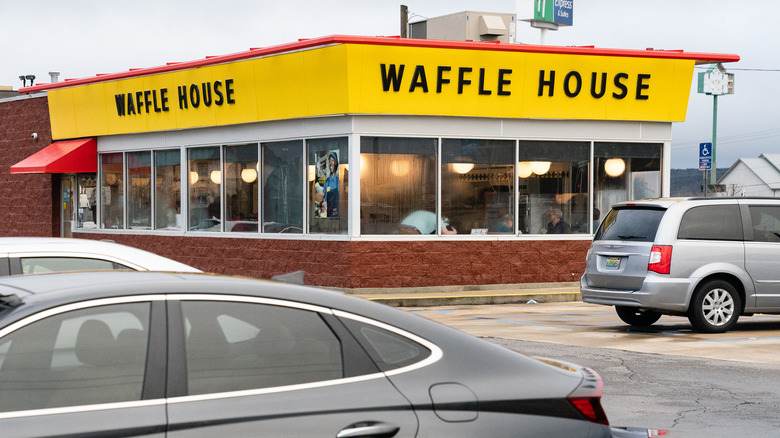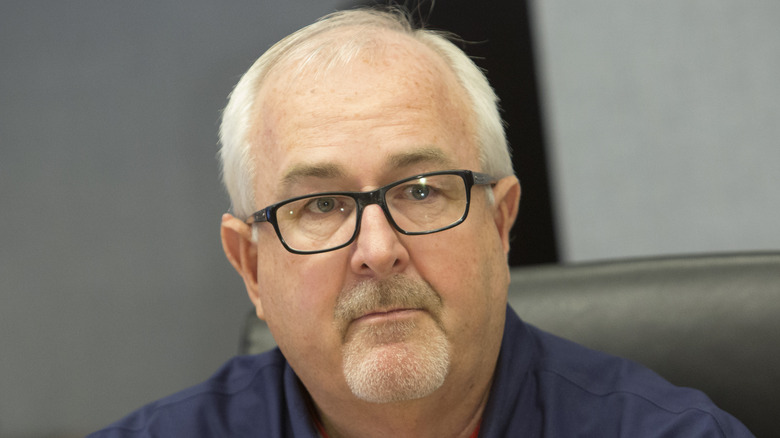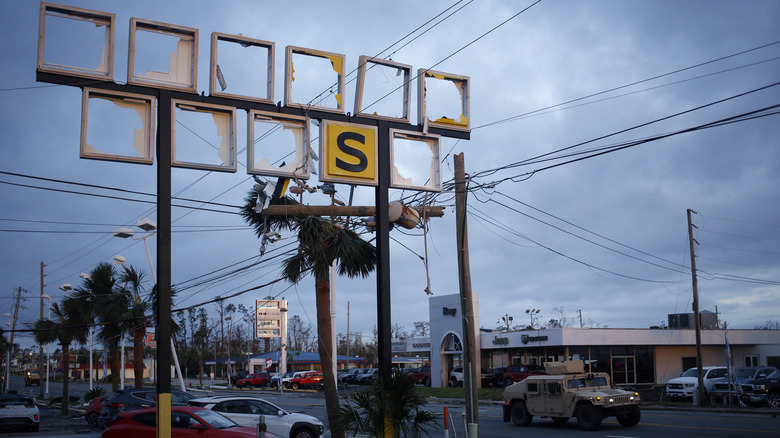How Waffle House Became The Barometer For FEMA Disaster Relief
The Federal Emergency Management Agency, or FEMA, was created in 1979 by President Jimmy Carter. It's FEMA's responsibility to provide preparation and relief to areas within the United States that are affected by natural disasters. Additionally, their duties include predicting how bad the impact of a hurricane will be. One way they do this is by using the Saffir-Simpson Wind Scale. Fox Weather reports that this scale classifies hurricanes by five categories, based on sustained winds. In other words, a Category 1 hurricane is alarming but not calamitous. However, Category 4 and 5 hurricanes mean total destruction is imminent.
That being said, there is another way FEMA measures how catastrophic a hurricane will be: the Waffle House Index (via ABC News). Per CNN, Waffle House is a chain of restaurants that is open 24 hours a day, seven days a week. Scrape Hero states that as of 2022, there are 1,956 Waffle House locations across 25 states in the U.S. As a majority of those are concentrated around the South, the Gulf Coast, and the Mid-Atlantic region, a Waffle House is almost always likely to be on a hurricane's path. Despite this, they rarely ever close, even when disaster strikes.
It all comes down to Waffle House's philosophy
CNN reports that the Waffle House Index was the brainchild of Craig Fugate (above), a former FEMA employee. In 2004, Fugate and his team went to Florida to evaluate the damage caused by Hurricane Charley (per the Department of Commerce), which was classified as a Category 4 storm. When they got hungry, they found that Waffle House was the only business that was open. They continued driving along and realized that most Waffle Houses were operating while other restaurants were shuttered. The same thing occurred when other hurricanes hit Florida that same year. As explained by ABC News, once a Waffle House is open, its goal is to stay open, no matter what.
This prompted Fugate to create the Waffle House Index. According to Yahoo! News, if a location is "Green," then it's operating normally. If it's "Yellow," some menu items are unavailable. If it's "Red," the restaurant is closed. If the Waffle House is closed, it can be presumed the area has been hit especially hard during a natural disaster. However, there is a misconception that the Waffle House Index is used before a disaster actually hits to predict its severity. In reality, the index is used to stipulate how badly an area was affected (via CNN).
Popular Science reports that it's for this reason that the Waffle House Index is not considered scientific. Nonetheless, Waffle House has embraced the role they play with FEMA. This includes investing in storm-tracking technology to better predict how their operational status will be affected by a natural disaster.
This is how Waffle House plans for storms
After Hurricane Katrina devastated several Waffle House locations in 2005, the company began extensively prepping for disasters. Besides the aforementioned storm tracking, Popular Science reports that Waffle House also has their own generators, a mobile command center, and ensures that their employees have been prepped in crisis management. Additionally, they provide their storm-tracking information to FEMA. This allows FEMA to supply better disaster relief quicker. Per ABC News, Waffle House also has several procedures to get things moving when hurricanes and other disasters occur. USA Today refers to them as a "jump team." They consist of contractors, construction workers, food operators, and more.
The role they play is significant; they make certain a Waffle House that has been hit can provide meals to those in need. Furthermore, this allows employees to attend to their own needs. According to a report by the Orlando Sentinel, the "jump team" was implemented during Hurricane Michael, a Category 5 storm that hit Panama City, Florida. Most of the Waffle Houses in the area were severely damaged and employees were unable to get to them. Locations that had no power were given generators and gasoline. If they had no water, they were provided water bottles for cooking.
Furthermore, portable toilets and food trucks also came to the rescue. For the time being, "jump team" members were the ones on the grills cooking and attending to hungry customers. As USA Today explains, the "jump team" is always ready to go and can handle any Waffle House in any state because of their consistent system.


